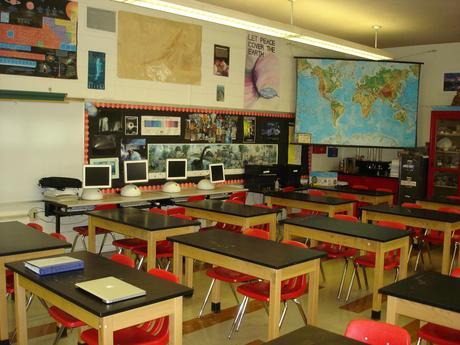One of the things at which I work very hard is trying to provide students with opportunities to achieve a level 5 understanding on my scoring scale. While I tell students that not all of my I can statements can reach a level 4, I will often give them opportunities to synthesize several I can statements together as well as apply them to something new I've thrown at them so they can show me they can do what I consider level 5 skills: evaluation, synthesis, application, and creation.
Because I am bestowed with the gift of a 1:1 classroom, I find that technology has really made it much easier to give students more opportunities to show off their mastery of my level 5 skills. Specifically, I have started using screencasting as a way for students to show me--and tell me--what they can do. My Biology students did this for the first time this week, and below are the instructions I made for them in a screencast, using Screenr as our screencasting tool ( I know there are other options for screencasting, but we run a Linux environment at school, so this is currently our best option). I believe that if you want students to use a tool, you need to model the use of that tool by actually using the tool yourself. So, I reasoned, what better way to introduce screencasting than by making a screencast about what needed to be included in their screencasts? Just to sum up the assignment, students had to read an article from Scientific American called "Ecosystems on the Brink." They then had to discuss how energy flows through ecosystems, how abiotic and biotic factors interact in ecosystems and how that influences energy flow, and they had to provide evidence concerning how populations, communities, and ecosystems are intertwined. They couldn't just answer my questions--they had to pull out specific evidence and inferences from the article they had uploaded into Crocodoc, and use the "draw" tool to underline and point out their evidence to me.
My students did not meet this new screencasting challenge with enthusiasm. Instead, I got some fearful and frightened looks, some of them because they hate hearing the sounds of their own voices (does anyone? Even I think I sound like a total moron). Most of the trepidation, I found out later, was because they were scared to try this new way of showing what they know. They actually had to dig into the reading rather then run their eyeballs over the words; they had to draw inferences out and plan out what they were going to say. Plus, they only had 5 minutes--the maximum screencast length for free Screenr accounts--so they really had to focus on the important things, and not dole out the usual fluff around their ideas for padding. They had to make connections rather than recite information, and they had to choose their words carefully.
In other words, it was a world apart from filling out a multiple choice test. Plus, listening to them provides me with more evidence of where their skills and knowledge are at than any multiple choice test can ever do. And, since they embedded these on their blogs ("So easy a fetus could do it!" as my students say), I can easily give formative feedback for improvement in the form of comments.
This is a tool I will definitely be using again--they will be screencasting about their blogs at the end of the semester as a part of their final exam. To check out other ways to use screencasting as well as other information about the process, you can check out the resources below. If you have used screencasting in your classroom, please feel free to share what you've done and how it's worked for you.
- Screencasting to collaborate or show off student work via Free Technology for Teachers
- Screencasts Turn Students into Digital Teachers
- 7 Things You Should Know About Screencasting
- Screencasting Examples
- K12Online Conference - Screencasting 101 (Livebinder)

